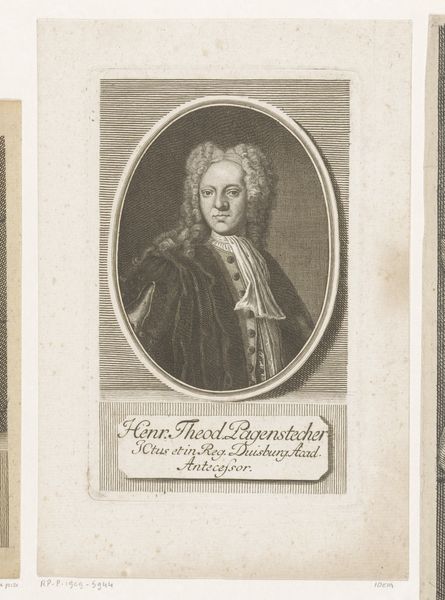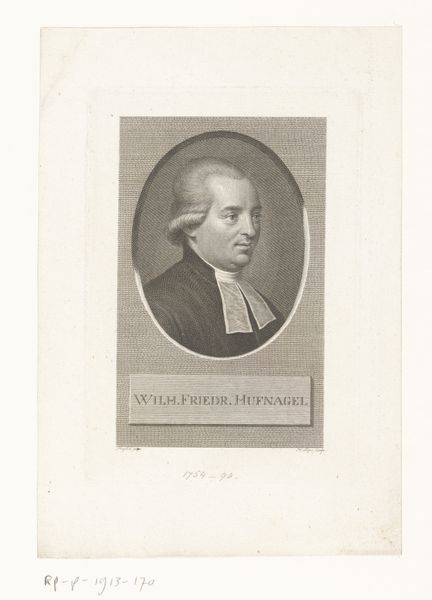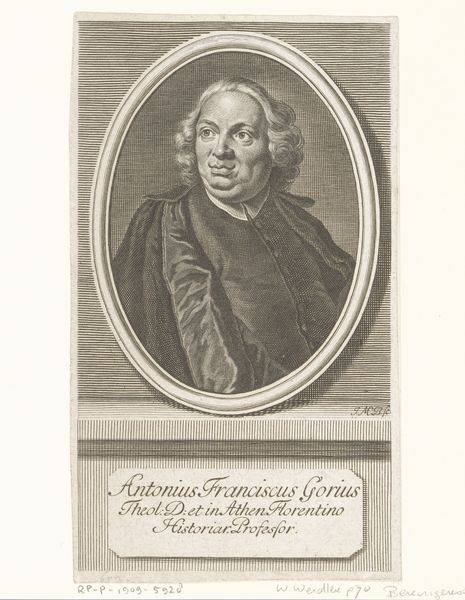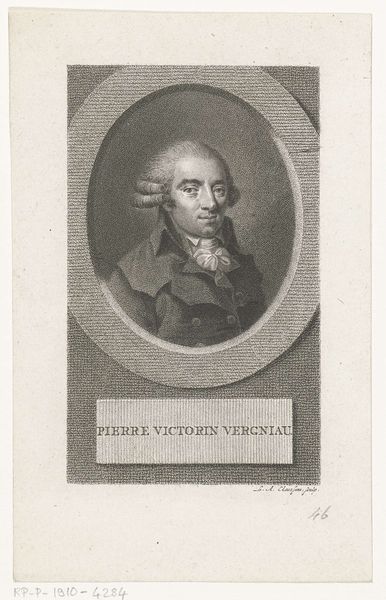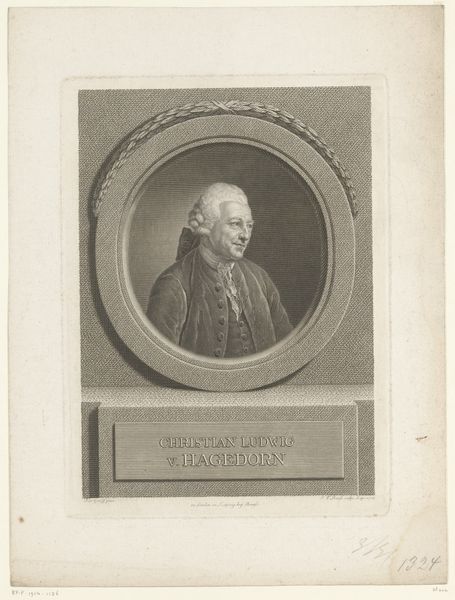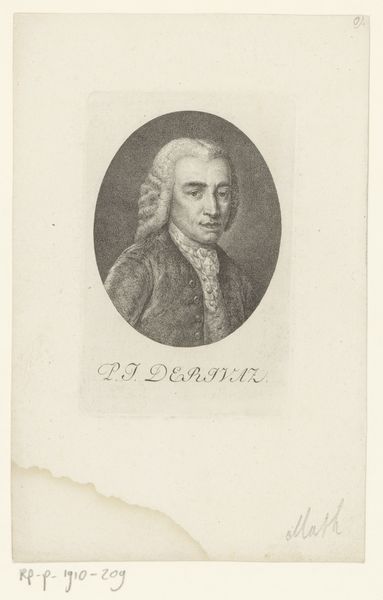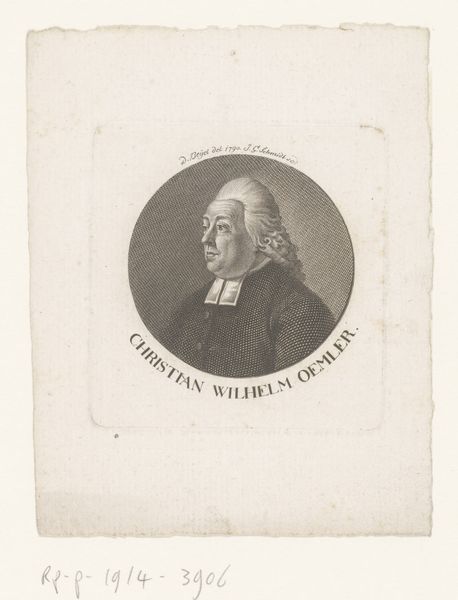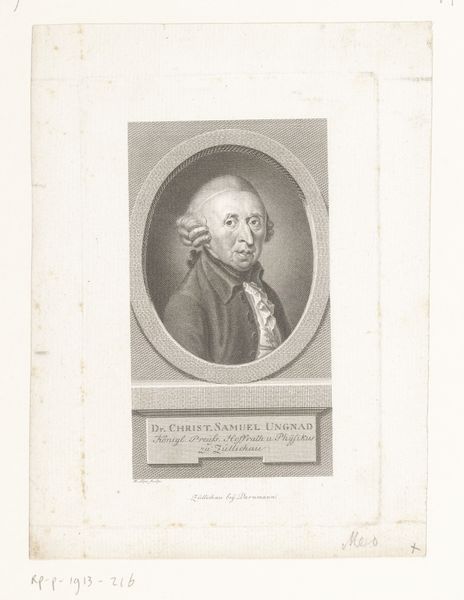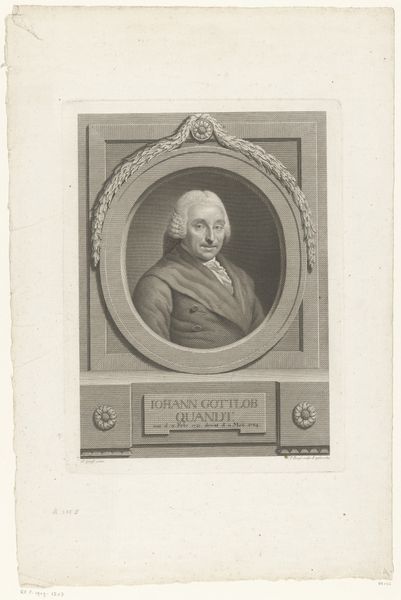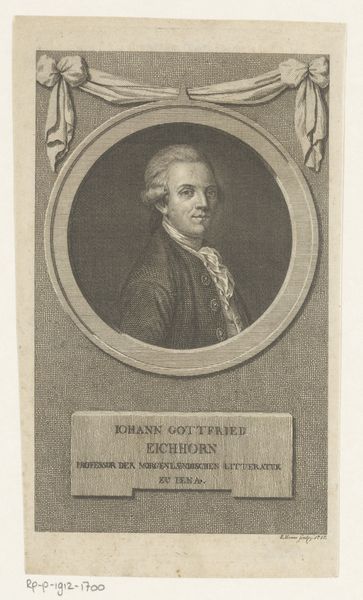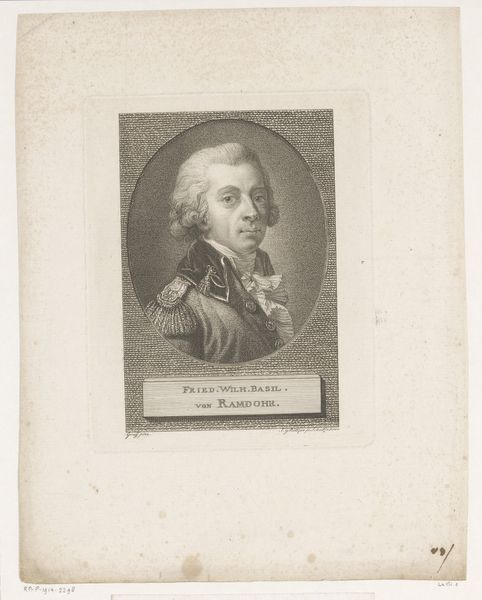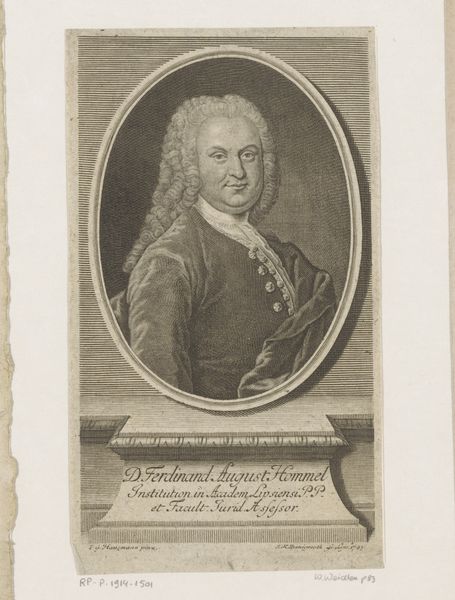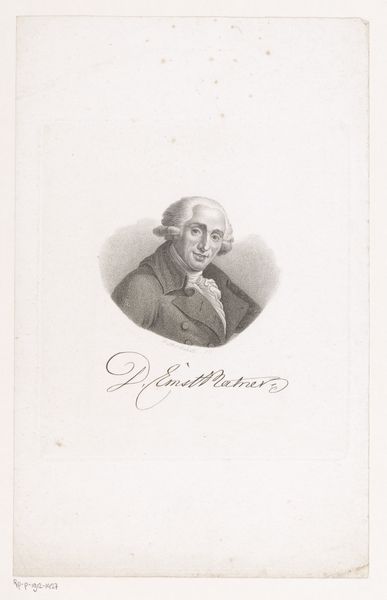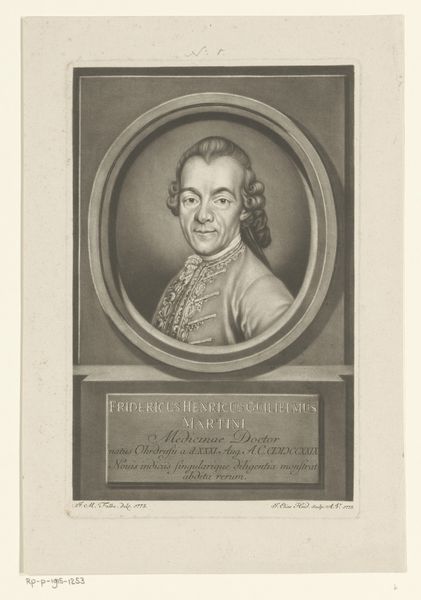
paper, engraving
#
portrait
#
neoclacissism
#
figuration
#
paper
#
line
#
engraving
Dimensions: height 158 mm, width 110 mm
Copyright: Rijks Museum: Open Domain
Curator: Here we have Johann Heinrich Lips's "Portret van Franz Volkmar Reinhard," an engraving dating from 1768 to 1817, currently held at the Rijksmuseum. It's a fairly small piece. What's your initial take on it? Editor: It strikes me as severe, almost stoic. There’s a formality to it that feels very distant. The rigid lines, the tight oval frame – it all contributes to this sense of controlled presentation, quite typical of the period. Curator: Absolutely. Consider the engraver’s process, the careful labor to create that portrait. It wasn't merely about artistic expression. Lips needed skills but, perhaps more interestingly, reproducible skills aligned with the wider printing demands of the time. Editor: I wonder, how does Reinhard, depicted in this era of revolution and upheaval, negotiate his own identity? Was this a deliberate construction, an assertion of authority during unstable times, or simply conforming to prevailing social norms? The whiteness of the paper stock certainly adds to that feeling of detachment and inaccessible elitism. Curator: It speaks volumes about production methods. Paper was, and continues to be, deeply implicated in class, access to literacy, and ultimately, in shaping historical narratives. How do the engraving's lines—crisp, economical, disciplined—convey not only likeness but also this implied social order? The portrait almost becomes a product of its age. Editor: I agree. This emphasis on controlled precision, replicated through prints, underscores an important shift toward mass communication and circulation of ideals, impacting contemporary views on identity, status, and power. A shift not divorced from the project of modernity. Curator: Exactly. By emphasizing the means of its making, it offers a compelling critique. Editor: This exercise challenges assumptions on who and how a person can claim power. Seeing Lips's print in the light of the production's implications—and also bearing in mind contemporary debates around representation—shifts how we understand these historical images. Curator: Considering the material and techniques definitely allows us to reflect not only on its aesthetic, but its production history as well. Editor: Indeed, hopefully enriching and questioning our contemporary values of art in the process.
Comments
No comments
Be the first to comment and join the conversation on the ultimate creative platform.
